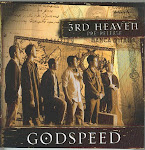I like to write my theme (one sentence) on a 3 x 5 card and tape it to my computer. As I write, this reminder helps to keep me on the beaten path and not go off on "rabbit trails".
Here are some rules to remember about theme:
- Try not to hit the reader over the head with your message. Even fun, light-hearted books for kids have themes. They don't have to be "heavy".
- When writing for young children, it's best to stick with just one theme. Several themes will confuse the picture book age child about the message of your story.
- The theme must come through the action and reaction of the main character(s).
- The theme connects all events in your story.
- If you can tell someone what your story is about in a single sentence, you have expressed the theme. Example: The universal theme in the movie “It’s a Wonderful Life” is: Each individual’s life is significant and affects others. That is the DOMINANT IDEA developed in the story. The theme was developed through the plot. The PLOT: All that George Bailey goes through in order to see what life would have been like without him.
Can you figure out the themes in these excerpts from two of my magazine stories? I've listed the themes at the end of this article. Don't peek until you've finished the exercise (o:
From my magazine fiction story, The Learning Bug:
Gabe Grasshopper didn't want the next day to come.
"I don't want to go to school," he told his mom and dad.
"You'll learn lots of new things," his mom said.
"I don't want to learn new things," Gabe said with a frown. "That's too hard."
"You'll learn how to read your favorite books and write your name," his dad said.
"And you'll make new friends," his mom pointed out.
"You'll learn about nature and the earth," his dad continued.
"You'll learn so many new things at school!" Gabe's mom said enthusiastically.
"I don't want to learn new things!" Gabe insisted. "Learning is too hard. I want to stay home and play. Playing isn't hard."
From my magazine fiction story, Cookie Crazy:
Chatty Chipmunk hurried along, carrying a big basket. A most delicious smell trailed behind it. Chatty always welcomed a new neighbor with her award-winning cookies.
"Hello! Welcome to the neighborhood," said Chatty to Puff Bunny.
"How nice!" Puff said. "Please come in."
They sat and talked in Puff's kitchen. Right away they felt like good friends.
"These are the best cookies I've ever eaten," Puff said, munching her third one.
"Thank you," Chatty said. "They are my PRIZE-WINNING cookies. And these are my blue ribbons." She pulled open her sweater to show the ribbons, pinned right smack dab in the middle of her apron.
"Oooh! I sure would like to win a blue ribbon," Puff said. "Perhaps I'll enter the contest, too!"
"Well, I'm certain to win again at this years baking contest," Chatty said. "But you can come over anytime to look at my ribbons."
ANSWERS:
- Theme for The Learning Bug: Overcoming the fear of having to experience something new and unfamiliar.
- Theme for Cookie Crazy: Competition between friends can be healthy even though it may be difficult.
When I read magazine stories and picture books, I like to see how soon I can identify the theme. It's a great exercise and can teach you how to introduce the theme SUBTLY in the beginning of a story.
Are you ready to choose an age appropriate theme and start writing? Get out that 3 x 5 card and don't waiver. Have fun!
Copyright 2008 Sheryl Ann Crawford






















